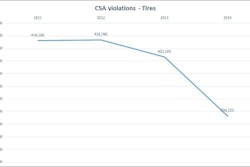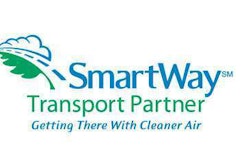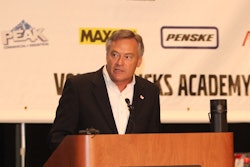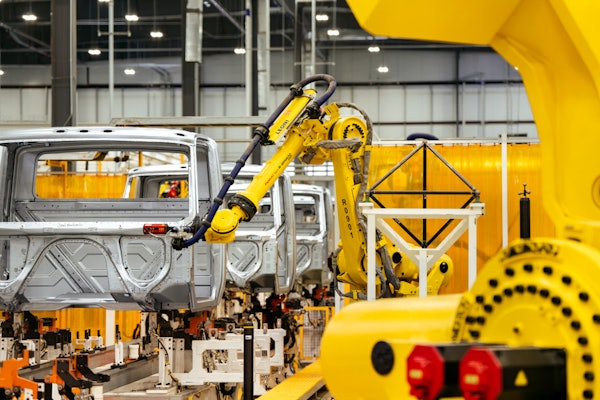The entire organized heavy-duty aftermarket seems to have emerged all at once about 50 years ago. Organizations such as the Automotive Electric Association (AEA) and the National Wheel and Rim Association (NWRA) were around earlier, formed mostly to deal with protected territories from a handful of key suppliers.
But in 1966, the old order was about to change:
- The Council of Fleet Specialists (CFS) was formed by leading independents with some leadership from Jim Moss and Bud Reese. Truck parts guys were tired of being treated as second class citizens to the car parts WDs. (Editor’s note: Moss also settled on the name Truck Parts & Service for this publication in 1966.)
- A fledgling Texas truck dealer sales guy named Marvin Rush made his first big fleet sale (100 units). Today, Rush Enterprises sells about a third of all Peterbilts made.
- Paccar formed Dynacraft to capture more overall parts sales. International was about to bring out ideas like all-makes line FleetRite and concepts like the NUT TRUCK (basically a dealer-operated fastener and small parts wagon jobber).
Since this time, the industry has emerged as a $15 billion higher tech tangle of constantly morphing end users, consolidating distribution, electronic technologies and regulations. Product life-cycles are the shortest in history, while the lack of new trained personal has hit extremely troubling levels.
Technology has gone on a tear, forming the basis for the fastest evolutionary phase since trucking got started in the 1920s. So how about some predictions for products and distribution over the next ten years.
Are you ready for the following potential 2018 products?
- Belt-less, diesel-electric hybrid integrated power plant/drive systems, with all electric PTO and collateral accessories feeding off a 500+volt system;
- 360-degree driver vision with auto reactive safety/collision avoidance systems monitored in a heads-up display glass cockpit, which also features a complete HR black box for driver management, maintenance insurance and law enforcement;
- Wireless lighting and braking monitored down to the fastener level by RFID derivative chips reporting directly to on-board vehicle management systems;
- Computer controlled, self-aligning spring-less suspensions that control stability of the vehicle by pulsing a current thru ferro-magnetic fluid filled ‘shock absorber’ modules whose stiffness varies with electrical charge;
- Speed sensitive, aerodynamically adaptable ‘NAFTA Liners’ specifically designed for long haul, highway-only operation, covered in power generating trailer coatings with superior insulating properties and self-illumination capability.
A different beast, indeed—no hydraulics, no pneumatics, less wiring—basically plastic bodied and lubricated by soybeans and used French fry grease. Not your father’s Class 8 truck!
How about the supply industries that make these things work?
- All remaining Class 8 truck builders will employ factory owned/operated retail chains to distribute vehicles and to provide major warranty service, as Tesla clears the way through archaic dealer/franchise laws.
- Independent parts and service organizations will migrate into two distinct channels- ESystem/Service Specialists and Legacy Mechanical parts (and service) centers.
- Federal licensing/certification becomes mandatory for technicians servicing emission or safety related systems, training for which will come from for-profit tech schools and community colleges.
- Training on legacy and low tech maintenance will be provided through a guild-like, service industry supplier supported distance learning model.
- Combinations of parts and component suppliers will operate complex common supply chains that allow ‘virtual logistics consolidation’ for smaller (and foreign) suppliers and force traditional distributors to look downstream for margin improvement.
Agree? Disagree?
Neither the product nor the distribution models outlined above are necessarily good or bad for anyone reading this—unless you simply dismiss these possibilities as futurist hogwash.
These may not happen exactly as described, but they will happen.
Not convinced? Consider that every single one of the product/technologies described already exists and is being developed for market by your existing suppliers today.
As to the changes in the support side of the heavy-duty business, you need only look at other markets that have gone through a period of wrenching change in their base technologies to see the trends that surface time after time.
Planning for business cycles is always tricky, and easily recognized in the rearview mirror. The real trick is to see them coming.










